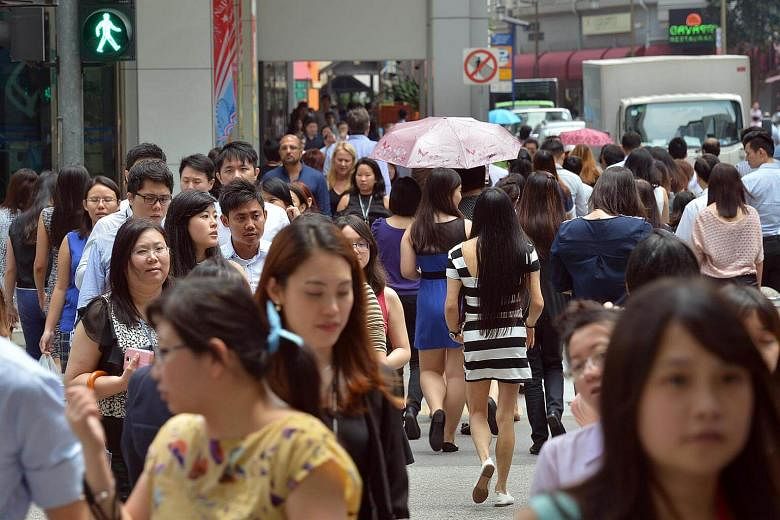Families earned more from work last year, but their rise in monthly income was smaller than in the previous year, figures released yesterday show.
Additionally, income inequality in Singapore last year was the lowest in a decade, as households with the highest incomes experienced the biggest slump in wage growth.
This, along with government transfers to the less well-off, narrowed the gap between the rich and the poor.
Last year saw the Gini coefficient - a measure of income inequality from 0 to 1, with 0 being most equal - at its lowest in a decade.
Singapore's score dipped from 0.463 in 2015 to 0.458 last year. It stood at 0.470 in 2006.
After taking government transfers and taxes into account, this score fell from 0.409 in 2015 to 0.402 last year.
The latest numbers on household income from the Department of Statistics' annual Key Household Income Trends report come amid a sluggish economy, and economists said they are a reflection of the weaker wage growth that has been reported in recent months.
The median monthly income for Singapore and permanent resident households with at least one working member grew from $8,666 in 2015 to $8,846 last year, without taking inflation into account.
After accounting for inflation, it was an increase of 2.6 per cent in real terms, about half of the 4.9 per cent recorded in 2015.
On the slower growth, DBS economist Irvin Seah noted that the labour market had softened significantly, with the number of retrenchments hitting a seven-year high last year.
Employment growth was at a 13-year low, while the overall number of job vacancies dipped.
Mr Seah said: "All this definitely points to slower income growth. This is part of the whole landscape of a slower economy."
SIM Global Education senior lecturer Tan Khay Boon said it was good that real incomes had gone up despite the challenging environment.
Households across all income groups also earned more per household member last year, but the rise was much less than in the year before.
The average household income per household member grew by between 0.2 per cent and 4.3 per cent in real terms last year. This was lower than the range recorded in 2015 of 5.7 per cent to 10.7 per cent.
Top-earning households - in the top 10 per cent - recorded slower income growth than those in other income groups, and saw their monthly income go up by 0.2 per cent, compared with 7.2 per cent in 2015.
The lowest-income group had the second-smallest percentage increase in real monthly income: A rise of 1.4 per cent.
Experts said more needed to be done to help these low-income working households, depending on their profiles, and cited more skills training as one possibility.
The report noted that families living in one-room and two-room Housing Board flats received more government transfers than those living in larger flats.
On average, those living in one- and two-room flats received $9,806 per household member from various government schemes last year.
This was more than double the average of $4,168 received per household member across all housing types.
SEE HOME
Correction note: In our earlier story, we had said the income of each working person per household grew by between 0.2 per cent and 4.3 per cent in real terms last year. It is actually the average household income per household member that grew by between 0.2 per cent and 4.3 per cent in real terms last year. Household income from work per household member is derived by dividing household income from work by the total number of members in the household, regardless of whether these members are working or not working.


